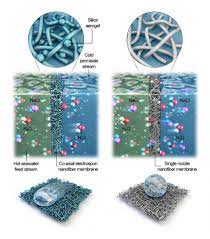
Breaking News
 The Decline Of Boys Participating In Youth Sports Has Led To A Generation Of Soft...
The Decline Of Boys Participating In Youth Sports Has Led To A Generation Of Soft...
 First Arrests Hint At How Billions In California Homeless Dollars Vanished...
First Arrests Hint At How Billions In California Homeless Dollars Vanished...
 Trump Refiles $15 Billion Defamation Lawsuit Against New York Times After Court Dismissal
Trump Refiles $15 Billion Defamation Lawsuit Against New York Times After Court Dismissal
 Can Diet-Changes Really Transform ADHD? One Family's Remarkable Discovery
Can Diet-Changes Really Transform ADHD? One Family's Remarkable Discovery
Top Tech News
 3D Printed Aluminum Alloy Sets Strength Record on Path to Lighter Aircraft Systems
3D Printed Aluminum Alloy Sets Strength Record on Path to Lighter Aircraft Systems
 Big Brother just got an upgrade.
Big Brother just got an upgrade.
SEMI-NEWS/SEMI-SATIRE: October 12, 2025 Edition
 Stem Cell Breakthrough for People with Parkinson's
Stem Cell Breakthrough for People with Parkinson's
 Linux Will Work For You. Time to Dump Windows 10. And Don't Bother with Windows 11
Linux Will Work For You. Time to Dump Windows 10. And Don't Bother with Windows 11
 XAI Using $18 Billion to Get 300,000 More Nvidia B200 Chips
XAI Using $18 Billion to Get 300,000 More Nvidia B200 Chips
 Immortal Monkeys? Not Quite, But Scientists Just Reversed Aging With 'Super' Stem Cells
Immortal Monkeys? Not Quite, But Scientists Just Reversed Aging With 'Super' Stem Cells
 ICE To Buy Tool That Tracks Locations Of Hundreds Of Millions Of Phones Every Day
ICE To Buy Tool That Tracks Locations Of Hundreds Of Millions Of Phones Every Day
 Yixiang 16kWh Battery For $1,920!? New Design!
Yixiang 16kWh Battery For $1,920!? New Design!
 Find a COMPATIBLE Linux Computer for $200+: Roadmap to Linux. Part 1
Find a COMPATIBLE Linux Computer for $200+: Roadmap to Linux. Part 1
Mixed up membrane desalinates water with 99.99 percent efficiency

Desalination could be a vital technology to meet the world's drinking water needs, and now Korean engineers have developed a new nanofiber membrane that can operate efficiently for long periods.There are a few different ways to desalinate water, but this study focuses on membrane distillation. In this process, the salty brine on one side of the membrane is heated, while the fresh water on the other side remains cold. The membrane is hydrophobic to repel the liquid water, but water vapor from the hot side can still pass through the pores. Due to a vapor pressure difference it drifts over to the cold side, where it recondenses as fresh water.



